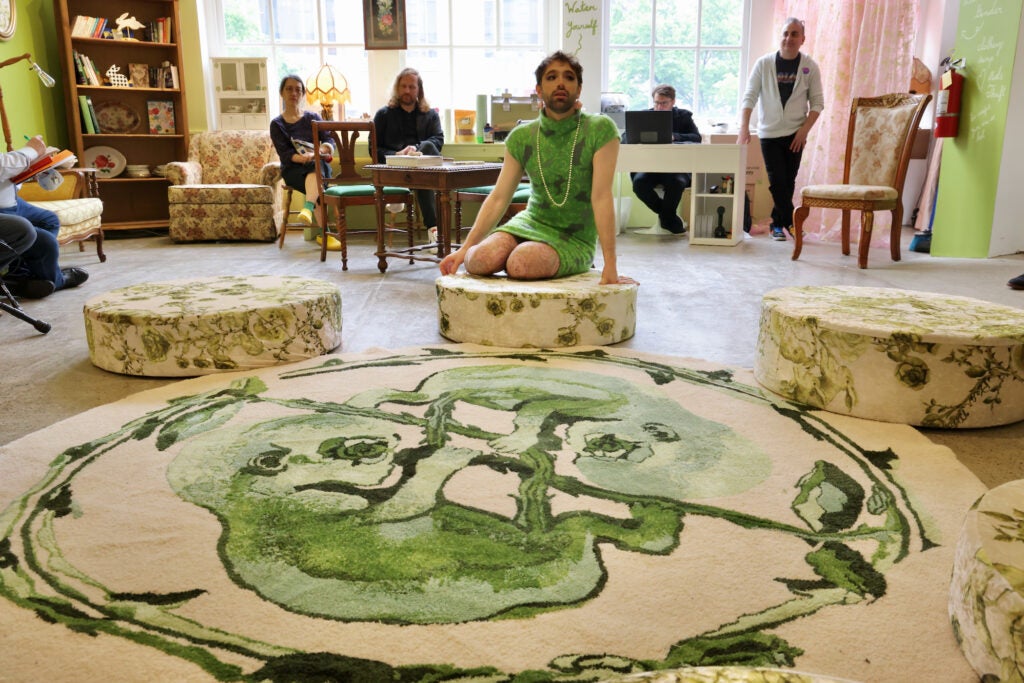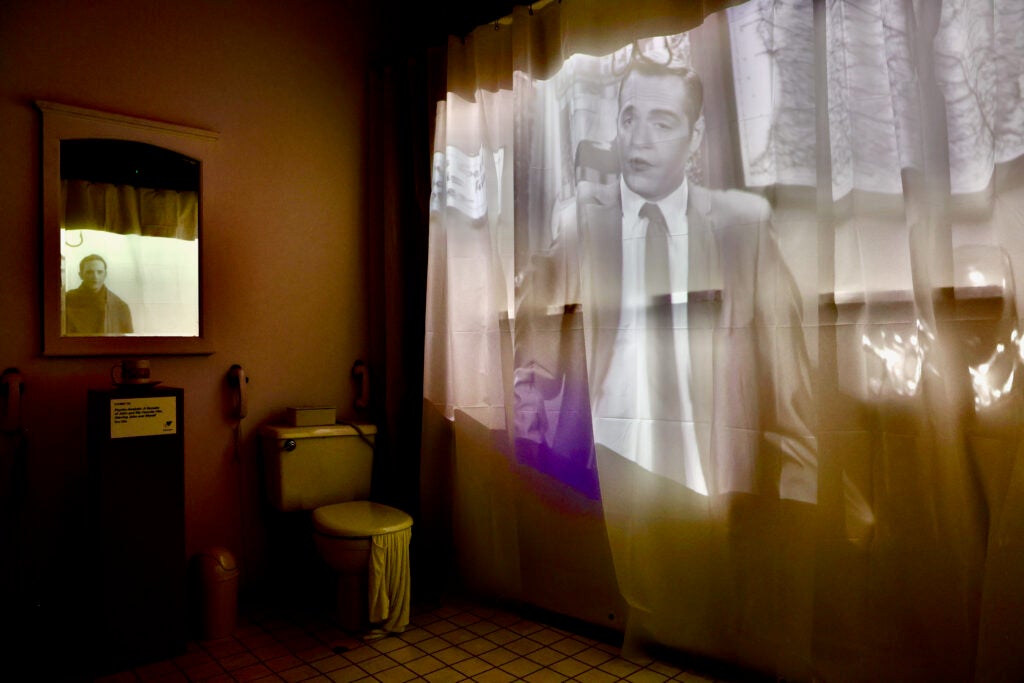In translating “Rose” from stage to gallery, Jarboe grappled with how to engage the audience. She did not want to lose the urgency of live performance inside the more static space of the Fabric Workshop. So Jarboe borrowed from the structure of games: video games’ “Easter eggs” and the detective work needed in escape rooms.
Visitors are given a weighted teacup at the outset. Saucers are placed throughout the exhibition to accept the cup, triggering multi-media activations. Other than that, very little instruction is offered for navigating the space.
Curiosity is required. The more you dig, the more you find.

“That’s the real gift of queerness, being born with a question inside you that’s insistent,” Jarboe said. “You have to ask that question, or you will not survive, literally. That’s why I’m trying to activate the gallery: you have to do work. You have to ask a question. We have to keep tending our garden.”
One of the cultural touchstones of “Rose Garden” is Alfred Hitchcock’s 1960 thriller “Psycho,” about a homicidal young man who absorbs the persona of his dead mother. Jarboe re-enacts particular scenes from the film, including its final expository scene when a court psychiatrist explains Norman Bates’ psychosis and transvestism.

“Psycho” was the first major American film to use the word “transvestite,” which initially the Motion Picture Production Code had tried to censor. It is also one of Jarboe’s favorite films. In the mythology of “Rose,” Jarboe and her sister, as embryos, would have movie nights and project “Psycho” on the uterine wall.
Jarboe could not resist personifying Hitchcock’s coda as the psychiatrist who equates transvestism with psychosis. Her performance is projected on a shower curtain, a nod to Janet Leigh’s famous death scene, as the folds of the curtain warp Jarboe’s face in an otherwise straight performance.
“The film is from a very CIS-hetero lens trying to explain queerness,” Jarboe said. “I just love that.“
“When you’re young and queer and growing up in the Midwest, at least when I was growing up in the Midwest in the early 90s, you latch onto those images,” she said. “The only images you’re given of who you are are deeply problematic: James Bond villains, Psycho, Jeffrey Dahmer, these horrible images of queerness. That’s what you eat. Those are the scraps that you eat to become who you are.”
